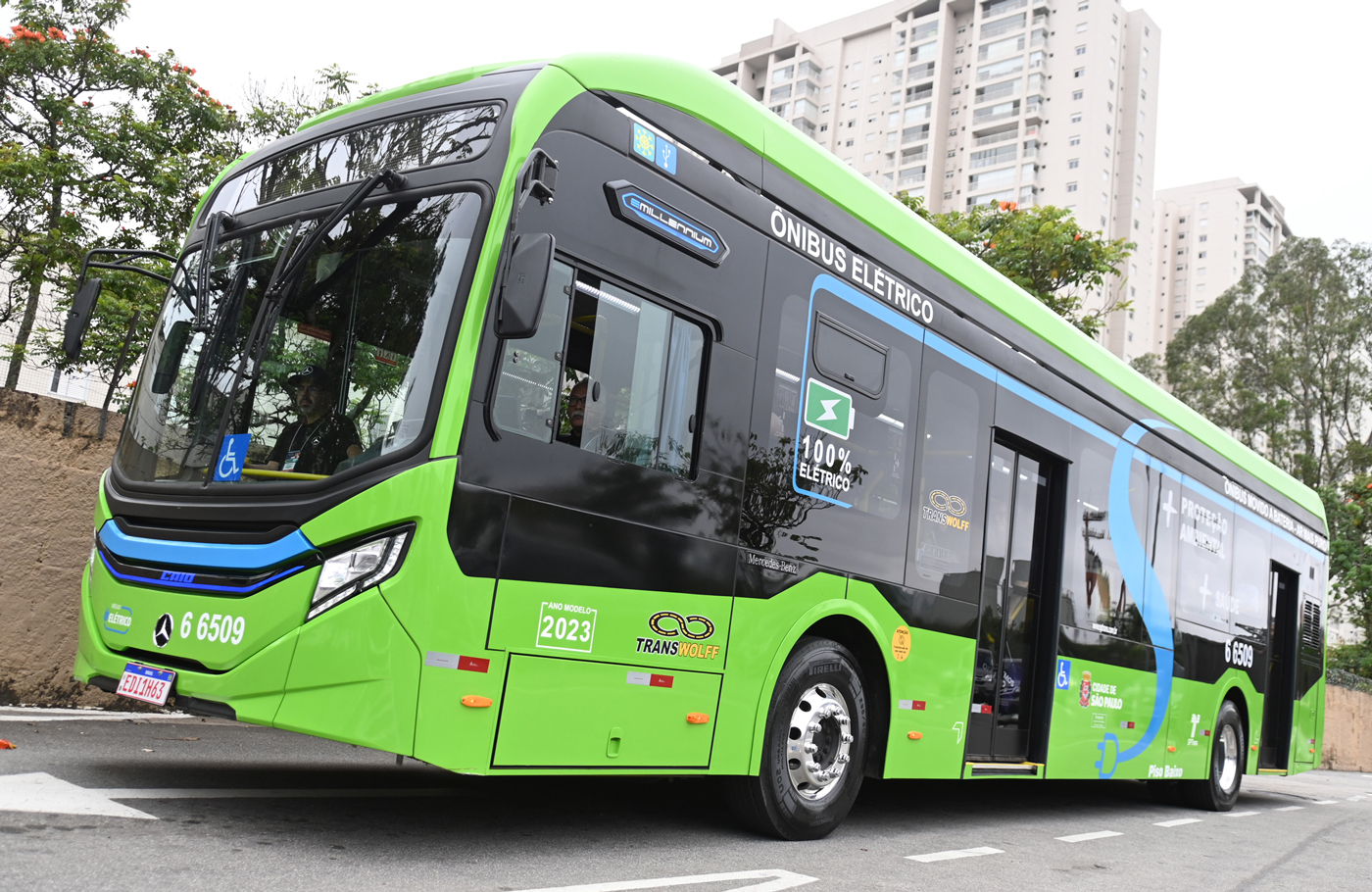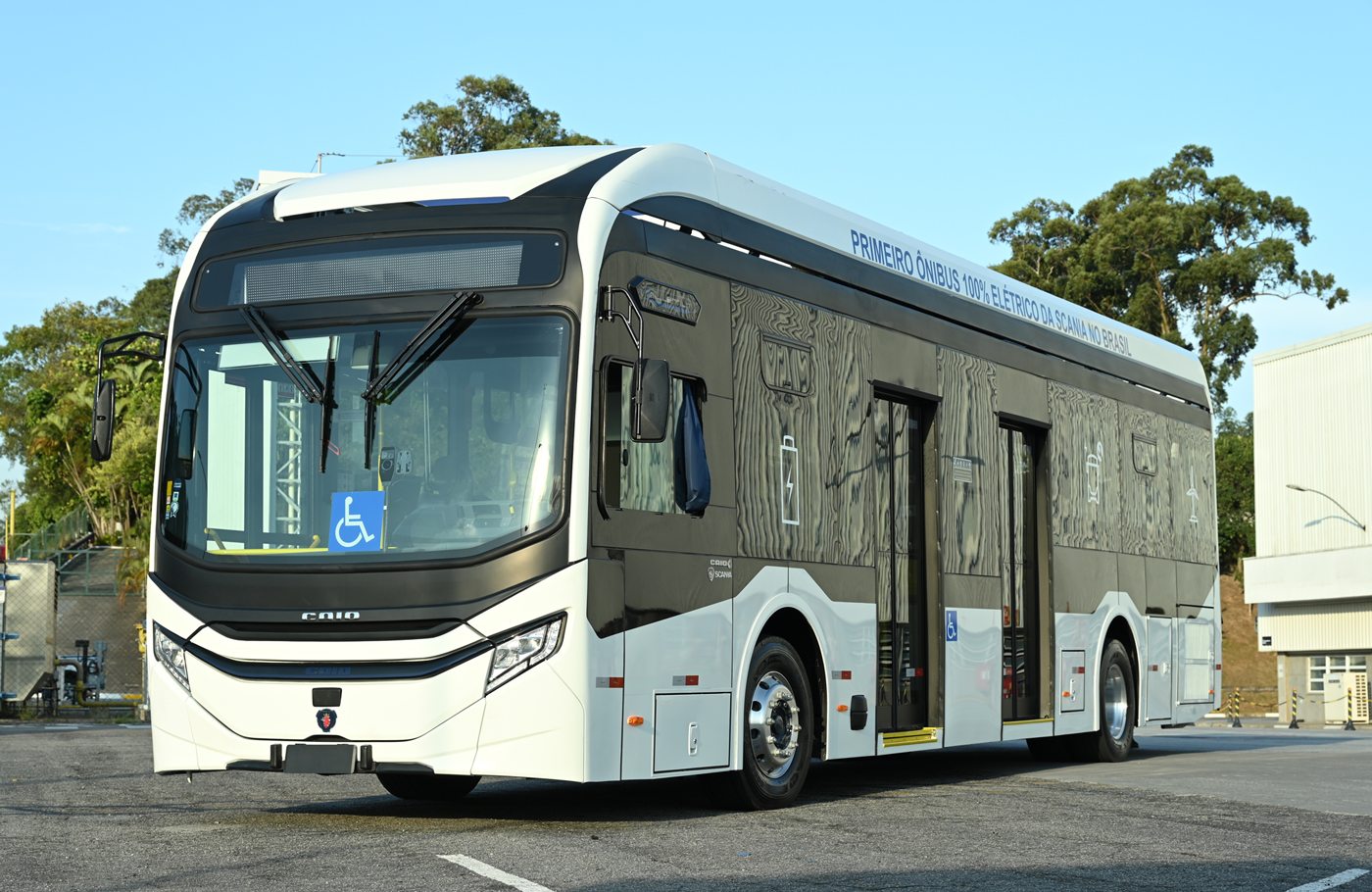Lat.Bus 2024 accelerates transition to electric buses
Lat.Bus 2024 accelerates transition to electric buses
Lat.Bus Transporte Público 2024, the largest fair in the public transportation sector in Latin America, took place from 6 to 8 August at São Paulo Expo, in the largest city on the continent. MARCOS VILLELA was there, and he writes that the exhibition highlighted the transition to electric buses within urban transportation.
A total of 20,000 people attended this year’s exhibition, including visitors, guests, and industry professionals. With a focus on decarbonising transportation, the fair featured important launches of urban electric buses from Scania, Volvo, Volkswagen, Marcopolo, and Eletra, in addition to new developments in intercity and charter buses.
Lat.Bus 2024 ended with a legacy of innovations and fundamental discussions for the future of transportation in Latin America. The event reinforced the importance of integrating technology, sustainability, and public safety in the search for more efficient and humane transportation.
Furthermore, the event highlighted the fact that Brazilian bus manufacturers export to several countries in Latin America, as well as to the Middle East and Africa. In the case of chassis and safety technologies, production is increasingly globalised with headquarters in Europe.
Urban buses
Brazil has 5,570 cities spread across the country and many have different regulations. In addition, exports are a major challenge for the industry in terms of homologation.
As of July 2024, the electric bus fleet in Brazil is 578 units – fewer than in three smaller countries on the same continent (Mexico with 752, Colombia with 1,590, and Chile with 2,446 units). This is according to a survey by non-governmental organisation E-Bus Radar. This platform is maintained by the Zero Emission Bus Rapid Deployment Accelerator partnership, created by the International Council on Clean Transportation together with C40 Cities – a group of mayors from around 100 cities on all continents.
On the other hand, Lat.Bus revealed that there is great optimism in Brazil when it comes to the transition from diesel to electric fleets. This is because financing is available from the Brazilian federal government and international institutions at low interest rates. These rates are available because the government would like to accelerate the replacement of fossil fuel-powered buses with 100% electric models and improvements in infrastructure. Preferential financing is also available for the replacement of Euro 5 diesel buses with Euro 6 models. In total, R$15 billion is available to fund the purchase of 3,563 urban electric buses and 3,931 Euro 6 buses.
Here is a summary of the main bus manufacturers, divided into urban and highway/charter buses.
Marcopolo and Volare
Volare, a Marcopolo brand, presented a highly innovative alternative focused on the Brazilian reality and that of countries with a greater supply of biofuels: the Attack 9 Hybrid microbus. Its batteries are charged by a small ethanol-powered engine, so it does not require expensive charger sockets and can be recharged at a regular fuel station.
The Attack 9 Hybrid is the first of its kind produced in Brazil, using national technology and representing a notable advance for the country’s automotive industry. Volare is using a modern 1.0 three-cylinder turbo engine from Horse, a manufacturer of engines for Renault and Geely. This engine is widely used by Renault in Europe. The solution is combined with electric motors and generators from Weg. This gives the model a range of up to 450km with a single ethanol refuelling and only three battery packs, storing 122kWh. This not only provides greater range for transporting passengers, but also ensures that the vehicle is a viable option in any region where ethanol is available.


Marcopolo Attivi Integral
Marcopolo also introduced the Attivi Integral, innovating with an interior configuration that is unprecedented in the Latin American market in terms of comfort, safety, and practicality. The model, with a PU dashboard and the use of recyclable materials such as aluminium, stands out for its improved ergonomics for the driver. Updates to software, energy management, and cooling systems have resulted in lower consumption and greater efficiency. With a length of 12,950mm, capacity for 89 passengers, newly designed upholstered city seats, and USB sockets, the Attivi Integral also offers full accessibility with a wheelchair ramp, air conditioning systems, and camera monitoring.
The Attivi Integral is 100% developed in Brazil. Equipped with a Weg Permanent Magnet-assisted Synchronous Reluctance electric motor, 396.75-kWh CALT batteries, and autonomy of up to 250km, the vehicle ensures greater efficiency and safety, including full air suspension and a fire suppression system.
Founded 75 years ago in Caxias do Sul in southern Brazil, Marcopolo is a leader in the manufacture of bus bodies in Brazil and is among the largest manufacturers in the world. The brand’s buses operate in more than 140 countries.
Iveco Bus
In Europe, air suspension is practically standard for obvious reasons: comfort and safety. In Brazil, it is also standard for medium- and long-distance buses. For short-distance and charter buses, however, the supply of models with this technology and acceptance by fleet operators has only been happening for a few years. Now, Iveco Brazil is offering another model with air suspension: the 17-280.
The “full air” solution includes airbags (two in the front and four in the rear), auxiliary stops, height-levelling valves, double-acting telescopic shock absorbers, and stabiliser bars. This provides a high level of comfort for passengers, while reducing vibrations and noise on board. Electronic safety system technologies are also integrated with the air suspension, which is not possible with metal suspensions.
In addition to passenger comfort, the air suspension system brings significant benefits for the driver and operator. The 17-280 driver will enjoy greater comfort and improved driveability, resulting in daily productivity gains. For the operator, system maintenance is easier, ensuring greater agility in the garage. As an option, the model offers a kneeling system, which allows the vehicle to be lowered to facilitate passenger access.
For short- and medium-distance urban and highway charters, Iveco has launched two models in the Daily Minibus line. The 50-180 without a sliding side door offers greater agility and profitability. With a 180-hp F1C engine and six-speed manual transmission, this version eliminates the need for side door maintenance, providing a free aisle and access through the front door to facilitate passenger boarding and disembarking.
In addition, Iveco presented the top-of-the-line Hi-Matic Executive version, equipped with the new eight-speed ZF-8HP automatic transmission, which offers smooth and fast gear changes, raising the standard of comfort and luxury in the passenger van segment. With the 18-hp F1C engine, the Hi-Matic Executive version offers more power and agility (especially on hills) and is focused on providing better performance, safety, operational economy, and comfort for drivers and passengers. The new transmission will soon also be available in the Charter and Touring versions.
Volvo Buses
Meeting the growing demand from cities to reduce CO2 emissions, Volvo has launched its new high-capacity electric chassis. Named the Bus Zero Rapid Transit (BZRT), the model will be available as a biarticulated vehicle. It
will be produced at the brand’s industrial complex in Curitiba (in the Brazilian state of Paraná), the city where the BRT concept was born in 1974.
This unit will also serve as a base for exporting the model to markets that demand high-capacity buses, advanced technology, and zero emissions in their passenger transport systems. Designed to accommodate bodies of up to 28m and transport up to 250 passengers, the BZRT is the largest electric vehicle in the world.
“Volvo has clear sustainability goals. We will reduce CO2 emissions from our vehicles by 50% by 2030 and reach zero by 2040. The launch of the BZRT is part of this strategy. A BRT with these vehicles is capable of transporting the same number of passengers as a subway system, but with significantly lower implementation and operating costs and now with zero emissions,” says André Marques, president of Volvo Buses Latin America. Of the Volvo buses produced at the Curitiba plant, 55% are for the domestic market and 45% are exported to Latin American countries.
In line with its vision of zero accidents, Volvo also launched the latest updates to the Active Safety System (ASS) for its intercity buses shortly after their debut in Europe. Now more advanced, the ASS includes new safety features, most of which are available as standard on the 6×2 and 8×2 intercity models. “We have maintained all the safety features that have been in place for years and have incorporated new devices,” says Paulo Arabian, commercial director of Volvo Buses in Brazil.
The main new features include Front and Side Blind Spot Alert, Traffic Sign Assist, Fatigue Detector, and Tyre Pressure Monitoring. The ASS also maintains established technologies, such as Collision Warning with Emergency Braking and Electronic Stability Programme (ESP). In addition, the new Volvo 6×2 and 8×2 chassis feature improvements such as the Overdrive transmission, which can reduce fuel consumption by up to 5%, and the 510-hp Volvo engine brake – the most powerful on the market. “These improvements reinforce our commitment to safety and efficiency in transportation,” emphasises Gilcarlo Prosdócimo, Volvo sales engineering manager.
Scania
Scania launched the K 230E, its first battery-powered electric vehicle in South America, and is set to begin delivering electric buses to customers in September next year. The new 4×2 electric bus will come in two versions, each with different battery configurations. The first version includes four battery packs (three in the front and one in the rear) providing a total capacity of 416kWh, while the second version features five battery packs (four front, one rear) offering an increased capacity of 520kWh. Both models are powered by the EMC 1-2 engine, which weighs 238kg and delivers torque comparable to a 400-hp diesel engine.
The buses will have a range of 300km under demanding conditions, such as with air conditioning running, full passenger load, and on rough terrain. Key components, including the battery cells and cables, will be imported from Sweden and assembled in Brazil.
Eletra School buses
Eletra, in partnership with Caio, presented the first 100% electric school buses in Brazil during Lat.Bus 2024. These innovative vehicles feature electric traction technology, Eletra integration, Caio eMillennium body, electric motor, and WEG batteries, with Mercedes-Benz and Volkswagen chassis. In addition to being sustainable, Eletra’s electric school buses are designed to offer an efficient and ecological alternative for school transportation in the country.
Published by
Focus on Transport
focusmagsa








